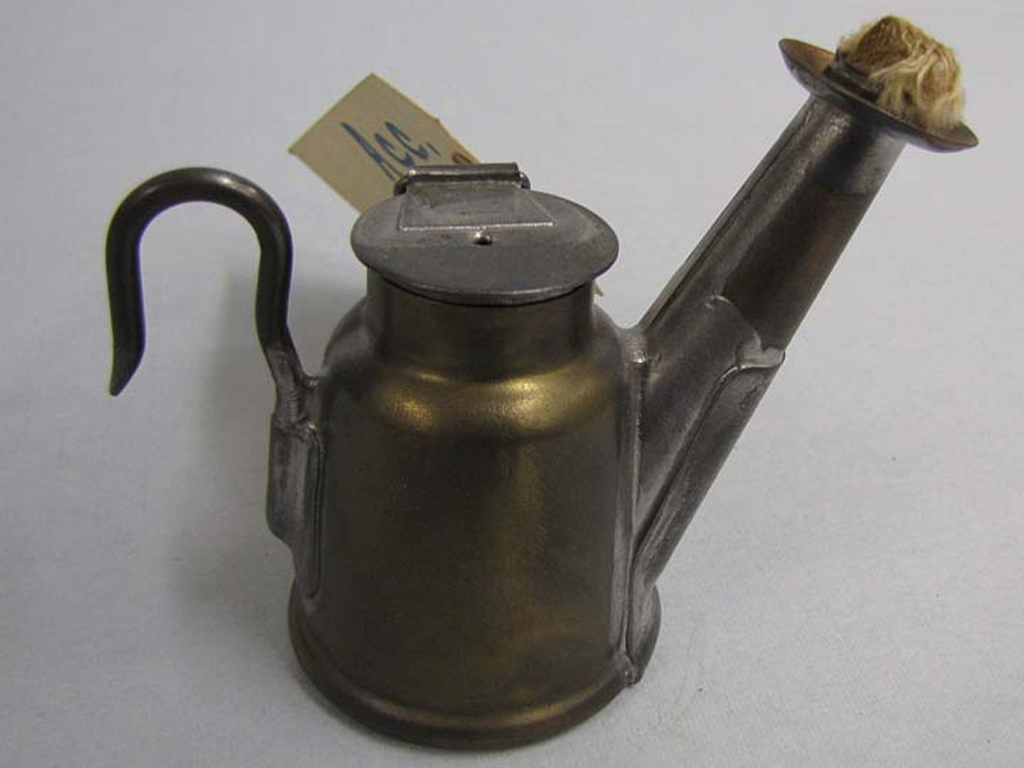 Oil-Wick Cap Lamp with Drip Ring Oil-Wick Cap Lamp with Drip Ring |
The oil-wick lamp first came into use in Scotland around 1850, and remained in use until the 1920’s. Before oil-wick lamps were popularized, candles were the main source of illumination in the mine. The candles were set into spiked metal candle holders, and either hammered into the framing timbers or precariously attached to a miner’s hat. The design of oil-wick cap lamps were simple and consistent, an appropriation of the teapot style of lamps available at the time.
The lamps were usually made of brass, with a hinged lid over the font and a hook on the back to mount the lamp on a miner’s cap. The font contained a mix of fat and oil for fuel, which would be pulled through the wick to the top of the spout, where the lamp would be lit. Miner’s would use the cheapest type of fuel they could get their hands on, often using lard oil cut with kerosene that gave off an extremely smoky flame, irritating the miner’s eyes and leaving his face coated with soot. The collection of oil-wick lamps shows a variety of attachments that were made to the spout. A drip ring could be added to catch any oil falling from the wick, and a reflector could be attached in and attempt to direct the light to the miner’s work surface.
 Miner's wearing Oil-Wick Lamps, Consolidated Coal Co. No. 204, Jenkins, KY July 19, 1912 Miner's wearing Oil-Wick Lamps, Consolidated Coal Co. No. 204, Jenkins, KY July 19, 1912 |
The oil-wick cap lamp held a variety of advantages over candles—the light burned brighter, lasted longer, and was easier to carry and wear. But the oil-wick cap lamp also had several drawbacks. The flame, while brighter than a candle’s, was much smokier, and the open flame of the oil-wick lamp could ignite the flammable gasses in mines resulting in deadly explosions. The threat of explosions prompted the development on the safety lamp for use in potentially combustible mines, and the invention of the carbide lamp generally phased out the use oil-wick lamps by the 1920s.
